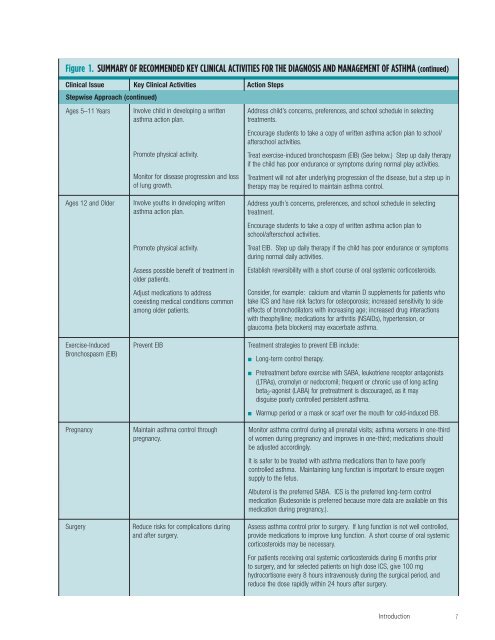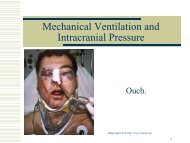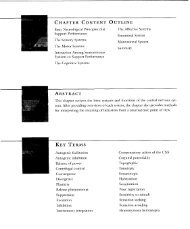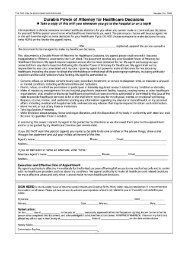Guidelines for the Diagnosis and Management of Asthma
Guidelines for the Diagnosis and Management of Asthma
Guidelines for the Diagnosis and Management of Asthma
Create successful ePaper yourself
Turn your PDF publications into a flip-book with our unique Google optimized e-Paper software.
Figure 1. SUMMARY OF RECOMMENDED KEY CLINICAL ACTIVITIES FOR THE DIAGNOSIS AND MANAGEMENT OF ASTHMA (continued)<br />
Clinical Issue Key Clinical Activities Action Steps<br />
Stepwise Approach (continued)<br />
Ages 5–11 Years<br />
Involve child in developing a written<br />
asthma action plan.<br />
Promote physical activity.<br />
Monitor <strong>for</strong> disease progression <strong>and</strong> loss<br />
<strong>of</strong> lung growth.<br />
Address child’s concerns, preferences, <strong>and</strong> school schedule in selecting<br />
treatments.<br />
Encourage students to take a copy <strong>of</strong> written asthma action plan to school/<br />
afterschool activities.<br />
Treat exercise-induced bronchospasm (EIB) (See below.) Step up daily <strong>the</strong>rapy<br />
if <strong>the</strong> child has poor endurance or symptoms during normal play activities.<br />
Treatment will not alter underlying progression <strong>of</strong> <strong>the</strong> disease, but a step up in<br />
<strong>the</strong>rapy may be required to maintain asthma control.<br />
Ages 12 <strong>and</strong> Older<br />
Exercise-Induced<br />
Bronchospasm (EIB)<br />
Pregnancy<br />
Surgery<br />
Involve youths in developing written<br />
asthma action plan.<br />
Promote physical activity.<br />
Assess possible benefit <strong>of</strong> treatment in<br />
older patients.<br />
Adjust medications to address<br />
coexisting medical conditions common<br />
among older patients.<br />
Prevent EIB<br />
Maintain asthma control through<br />
pregnancy.<br />
Reduce risks <strong>for</strong> complications during<br />
<strong>and</strong> after surgery.<br />
Address youth’s concerns, preferences, <strong>and</strong> school schedule in selecting<br />
treatment.<br />
Encourage students to take a copy <strong>of</strong> written asthma action plan to<br />
school/afterschool activities.<br />
Treat EIB. Step up daily <strong>the</strong>rapy if <strong>the</strong> child has poor endurance or symptoms<br />
during normal daily activities.<br />
Establish reversibility with a short course <strong>of</strong> oral systemic corticosteroids.<br />
Consider, <strong>for</strong> example: calcium <strong>and</strong> vitamin D supplements <strong>for</strong> patients who<br />
take ICS <strong>and</strong> have risk factors <strong>for</strong> osteoporosis; increased sensitivity to side<br />
effects <strong>of</strong> bronchodilators with increasing age; increased drug interactions<br />
with <strong>the</strong>ophylline; medications <strong>for</strong> arthritis (NSAIDs), hypertension, or<br />
glaucoma (beta blockers) may exacerbate asthma.<br />
Treatment strategies to prevent EIB include:<br />
■<br />
■<br />
■<br />
Long-term control <strong>the</strong>rapy.<br />
Pretreatment be<strong>for</strong>e exercise with SABA, leukotriene receptor antagonists<br />
(LTRAs), cromolyn or nedocromil; frequent or chronic use <strong>of</strong> long acting<br />
beta 2 -agonist (LABA) <strong>for</strong> pretreatment is discouraged, as it may<br />
disguise poorly controlled persistent asthma.<br />
Warmup period or a mask or scarf over <strong>the</strong> mouth <strong>for</strong> cold-induced EIB.<br />
Monitor asthma control during all prenatal visits; asthma worsens in one-third<br />
<strong>of</strong> women during pregnancy <strong>and</strong> improves in one-third; medications should<br />
be adjusted accordingly.<br />
It is safer to be treated with asthma medications than to have poorly<br />
controlled asthma. Maintaining lung function is important to ensure oxygen<br />
supply to <strong>the</strong> fetus.<br />
Albuterol is <strong>the</strong> preferred SABA. ICS is <strong>the</strong> preferred long-term control<br />
medication (Budesonide is preferred because more data are available on this<br />
medication during pregnancy.).<br />
Assess asthma control prior to surgery. If lung function is not well controlled,<br />
provide medications to improve lung function. A short course <strong>of</strong> oral systemic<br />
corticosteroids may be necessary.<br />
For patients receiving oral systemic corticosteroids during 6 months prior<br />
to surgery, <strong>and</strong> <strong>for</strong> selected patients on high dose ICS, give 100 mg<br />
hydrocortisone every 8 hours intravenously during <strong>the</strong> surgical period, <strong>and</strong><br />
reduce <strong>the</strong> dose rapidly within 24 hours after surgery.<br />
Introduction<br />
7





